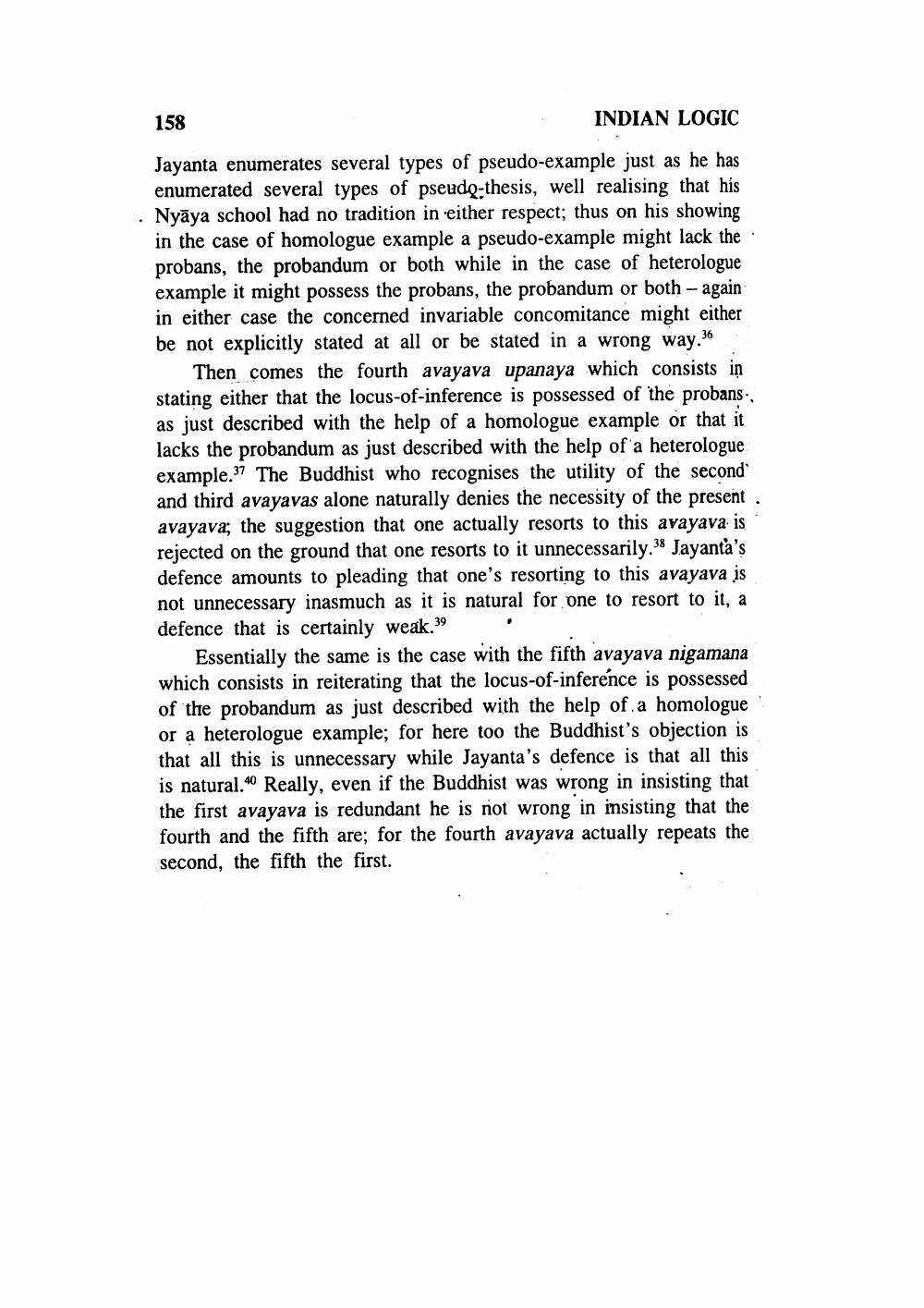________________
158
INDIAN LOGIC
Jayanta enumerates several types of pseudo-example just as he has
enumerated several types of pseudo-thesis, well realising that his · Nyāya school had no tradition in either respect; thus on his showing
in the case of homologue example a pseudo-example might lack the probans, the probandum or both while in the case of heterologue example it might possess the probans, the probandum or both - again in either case the concerned invariable concomitance might either be not explicitly stated at all or be stated in a wrong way.36
Then comes the fourth avayava upanaya which consists in stating either that the locus-of-inference is possessed of the probans, as just described with the help of a homologue example or that it lacks the probandum as just described with the help of a heterologue example.37 The Buddhist who recognises the utility of the second and third avayavas alone naturally denies the necessity of the present. avayava; the suggestion that one actually resorts to this avayava is rejected on the ground that one resorts to it unnecessarily. 38 Jayanta's defence amounts to pleading that one's resorting to this avayava is not unnecessary inasmuch as it is natural for one to resort to it, a defence that is certainly weak.39
Essentially the same is the case with the fifth avayava nigamana which consists in reiterating that the locus-of-inference is possessed of the probandum as just described with the help of a homologue or a heterologue example; for here too the Buddhist's objection is that all this is unnecessary while Jayanta's defence is that all this is natural.40 Really, even if the Buddhist was wrong in insisting that the first avayava is redundant he is not wrong in insisting that the fourth and the fifth are; for the fourth avayava actually repeats the second, the fifth the first.




